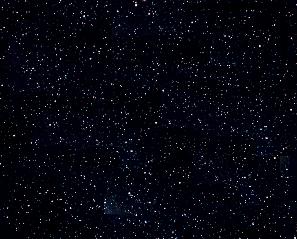 The Earth is the third planet from the Sun. It is where you and I live everyday. So far, it is the only planet that we know has life. Most of the surface of the Earth is water, that's why the picture above is so blue. You can see clouds, oceans and land in that picture. Do you know how much of the Earth is covered in water? E-mail me if you know! |
 The Moon is a satellite of the Earth. It circles or orbits the earth about once a month. Would you like to walk on the Moon someday? The moon helps control the waves of our oceans. It is also the easiest sky object to see with just your eyes. Try to look at it with binoculars and look for different sized craters. |
 The Sun is a medium sized star. It sits at the center of our solar system. All of the 9 planets go around the Sun in an orbit. The Sun makes life on Earth possible because it gives us both light and heat. |
 When you look up at night you can see thousands of stars in the sky. Stars are made mostly of gas and are very hot. They give off very large amounts of heat. The closest star to us is the Sun. |




 neighborhood!
neighborhood!